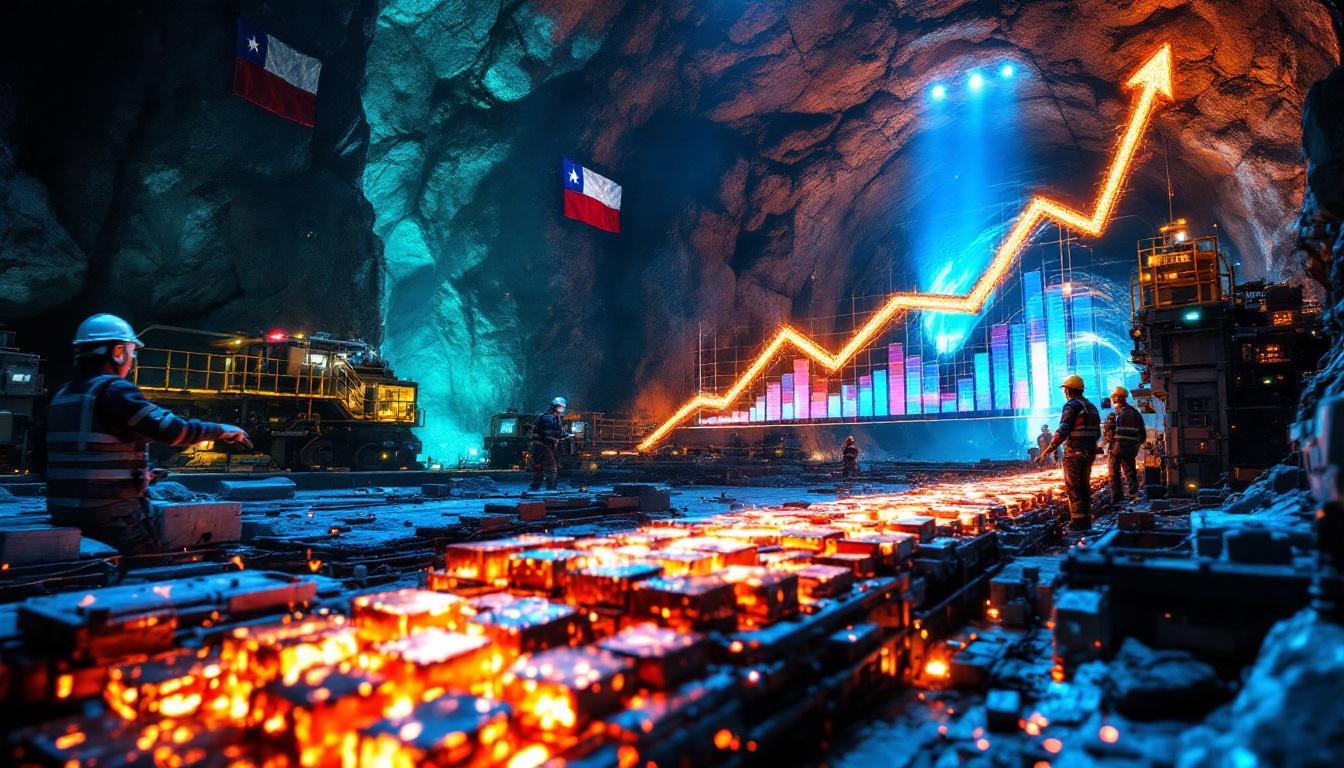US Approves Expansion of Montana Coal Mine: Environmental and Economic Implications
The Expansion of Montana coal mine approval has sparked both excitement and debate in energy circles. The project marks a pivotal moment for regional coal extraction while underscoring the economic ambitions of local stakeholders. It also reflects the Trump administration’s market‐shaping policies trump administration’s market‐shaping policies.
The federal decision enables the mine to extract 39.9 million tonnes of coal over the next 16 years. This milestone extends the mine's lifespan and fortifies its role in the energy landscape. Energy experts believe this approval could set the stage for further initiatives in the coal sector, particularly amidst evolving regulations.
What is the Spring Creek Mine Expansion Project?
The Spring Creek Mine expansion is the result of nearly two decades of endeavours by mine operators in Big Horn county. Located in Montana’s coal-rich region, this project has surmounted multiple regulatory hurdles. The new approval paves the way for a considerable increase in coal production, confirming the project’s economic viability.
The expansion involves extracting 39.9 million tonnes of coal. This quantity highlights the immense economic potential of the initiative. High-grade thermal coal from the region fetches premium prices in both domestic and international markets. This step also illustrates the broader implications of the Expansion of Montana coal mine approval.
Previous expansion attempts were thwarted by a court order mandating fresh federal environmental reviews. That setback demonstrates the challenging regulatory pathway for fossil fuel projects. Yet, perseverance and strategic planning helped secure federal backing in the final hours of the prior administration.
An official statement on the project can be found here. This government release details pivotal aspects of the decision, further cementing the project’s status as a critical energy initiative.
Who Operates the Spring Creek Mine?
The Spring Creek mine is operated by the Navajo Transitional Energy Company (NTEC). Owned by the Navajo Nation, NTEC plays a crucial role in tribal economic sovereignty and energy production in the western United States. This ownership model has enhanced tribal engagement in national energy markets.
In 2019, NTEC acquired the mine from Cloud Peak Energy during bankruptcy proceedings. Analysts reported that the acquisition cost about $45 million for three mines, including Spring Creek. This strategic buy highlights the tribe’s commitment to long-term energy development and economic independence.
The mine currently produces around 5 million tonnes of coal each year and employs roughly 250 individuals. The workforce enjoys wages above the regional median, with many earning approximately £80,000 annually. These figures illustrate a mutual benefit for both the tribal economy and local communities.
The project's approval represents a major victory for tribal interests. It solidifies NTEC’s position as a leading coal producer in the region. Additionally, it reinforces broader market stability despite the fluctuating fortunes of the coal industry.
How Does This Fit Into US Energy Policy?
The Expansion of Montana coal mine approval aligns with the former administration’s objective to rejuvenate USA fossil fuel production. The initiative underscores the push for domestic energy security amidst a rapidly shifting global landscape. Policy strategies during this era were designed to reduce regulatory burdens and expedite project approvals.
A notable contrast emerges from recent energy trends. Whereas coal's share of US electricity generation plunged from 50% in 2008 to less than 20% today, high-quality thermal coal still maintains significant market value. This shift is partly due to competition from natural gas and renewables, despite the political focus on traditional energy production.
Data from the US Energy Information Administration records a 35% decline in production between 2015 and 2020. However, the approved expansion shows that select reserves in Montana can remain competitive. Recent studies provide an in‐depth analysis of global coal consumption trends, placing the project in a broader economic context.
Policymakers continue weighing the economic benefits against environmental concerns as they support domestic production. The decision to extend the Spring Creek mine's operating life is a reflection of these competing priorities.
What Are the Environmental Considerations?
The project underwent a comprehensive federal environmental review mandated by the National Environmental Policy Act (NEPA). This review examined potential impacts on water quality, air quality, and the local biodiversity. Environmental groups have expressed concerns that coal combustion may lead to significant greenhouse gas emissions.
The analysis estimated that burning 39.9 million tonnes of coal could release around 75 million tonnes of CO2. This figure is roughly equivalent to the annual emissions of 16 million passenger vehicles. Critics argue that such figures make it vital to adopt modern mitigation techniques, including those highlighted in the complex role of mining in the clean energy transition.
Water resource management is another critical aspect of the review. The Spring Creek mine lies within the Powder River Basin watershed, a crucial water source for local agriculture. Advanced monitoring systems are required to track potential changes in groundwater and surface water due to mining operations.
Land restoration is mandated through reclamation bonds totalling around $118 million. These bonds ensure that, upon the cessation of mining, the land is rehabilitated with native vegetation and recontoured landscapes. Critics emphasise that strict oversight is necessary to meet these environmental commitments.
Recent environmental news reports have highlighted concerns over mine expansion impacts. Such discussions underscore the need for balanced policies that address both economic growth and ecological preservation.
What Are the Economic Implications?
The approval of the expansion secures approximately 250 direct jobs at the Spring Creek operation, bolstering the local economy. Average annual wages exceed £80,000, a figure significantly higher than the median income in Big Horn County. This financial uplift positively affects local communities and creates direct economic benefits.
In addition to direct employment, the project supports an estimated 350–400 indirect roles. These roles cover services such as logistics, equipment maintenance, and community support. Local governments receive around $5 million annually in relevant tax contributions. This revenue supports public services, including schools and infrastructure.
For the Navajo Nation, the project represents more than just an economic boost. It is a strategic diversification of economic interests, ensuring the tribal community benefits from energy resource management. Profits and royalties from the mine are reinvested into healthcare, education, and infrastructure projects.
During its operational life, the expansion is projected to generate gross revenues exceeding $1.5 billion. Based on current market prices near $40 per tonne for Powder River Basin coal, the economic impact is substantial and far-reaching.
The region will likely see further growth in related sectors as the coal market adapts. New coal projects may incorporate mining industry decarbonisation strategies to remain competitive. This kind of innovation will be crucial for balancing economic growth with environmental responsibilities.
FAQs About Coal Mining Expansion Projects
-
How do coal mine expansions receive federal approval?
Expansions on federal lands must secure endorsements from agencies such as the Bureau of Land Management and the Office of Surface Mining Reclamation and Enforcement. This process can span 3-5 years and involves environmental assessments and public consultations. -
What environmental reviews are required for mining expansions?
Projects trigger reviews under NEPA, either as an Environmental Assessment or an Environmental Impact Statement. These reviews assess impacts on air, water, wildlife, cultural sites, and climate, while also exploring alternative options. -
How do coal mining operations impact local communities?
Coal mining boosts employment and tax revenue. However, it may lead to increased truck traffic, dust-related air quality issues, and economic cycles typical of resource-dependent industries.
-
What is the role of tribal entities in US energy production?
Tribal nations control a significant portion of coal reserves west of the Mississippi. Operating mines, such as through NTEC, promotes economic sovereignty and direct tribal participation in energy markets. -
How do mine expansions balance economic benefits with environmental concerns?
Modern projects require companies to post reclamation bonds and implement advanced monitoring systems. These measures are designed to mitigate environmental harm while ensuring economic benefits.
Adapting to a Transitioning Energy Market
As energy policies evolve, the industry is compelled to adapt swiftly. The approval of the Spring Creek expansion exemplifies one of the last major investments under policies that favoured domestic fossil fuel production. Nevertheless, market dynamics are shifting as global efforts focus increasingly on sustainability.
Innovative coal projects now incorporate cleaner technologies. Increasingly, high-efficiency, low-emissions (HELE) coal plants are being developed to reduce carbon output by 25–40% compared to older facilities. These initiatives offer a promising pathway for traditional energy sectors to coexist with emergent renewable trends.
New developments in gas and renewable energy alternatives add complexity to the broader energy debate. While the Expansion of Montana coal mine approval has provided a temporary boost to the conventional energy market, it also highlights the need for continuous innovation. Companies are now exploring how to integrate cleaner coal technologies into their operations.
Additional examples of adaptation include sectors outside of direct coal production. For instance, several mining companies are realising benefits from repurposing reclaimed mine lands. These lands can be converted into renewable energy sites, further diversifying revenue streams while fulfilling environmental restoration obligations.
- Key takeaways from recent developments include:
- The reinforced economic role of coal in regional markets.
- The necessity for rigorous environmental oversight.
- Strategic moves by tribal entities to harness energy assets.
- Adaptation through emerging cleaner technologies.
The industry is influenced by evolving policy and market pressures from both federal authorities and environmental watchdogs. Emerging data suggest that projects like the Spring Creek mine must continue integrating cleaner practices. In this context, evidence also points to benefits from landmark methane regulations in coal mining.
What's Next for US Coal Mining?
The Spring Creek expansion stands as a key milestone within the US coal industry. It underscores the ongoing debate about the future of fossil fuels. While this project secures a long-term production future, changing energy landscapes require adapting business models on multiple fronts.
Industry experts predict that future coal projects will be highly selective. Only operations that prove economically sustainable below $40 per tonne will likely attract significant capital. This trend points to continued consolidation among high-quality reserves. The environment and economy must move hand in hand to secure a sustainable future.
Moreover, tribal ownership in energy ventures continues to gain traction. Other tribal groups, similar to Navajo Nation, are investing in diversified energy portfolios. Their involvement supports not only economic growth but also enhanced community participation in environmental governance.
The energy transition raises pivotal questions about balancing traditional practices with innovative technologies. As the market evolves, both public and private stakeholders must adapt to rigorous standards that promote efficiency, sustainability, and economic growth.
The ongoing Expansion of Montana coal mine approval remains a defining example of contemporary energy policy. This decision integrates economic imperatives with long-term environmental planning. With continued innovation and strategic investment, the coal industry may find a viable path forward in today’s challenging energy market.
Ready to Stay Ahead of Major Resource Discoveries?
Don't miss the next significant mineral discovery that could reshape markets – Discovery Alert's proprietary Discovery IQ model delivers instant notifications on high-potential ASX announcements, giving you the edge when opportunities emerge. Explore historic returns of major discoveries at https://discoveryalert.com.au/news/discoveries/ and position yourself ahead of the market today.




